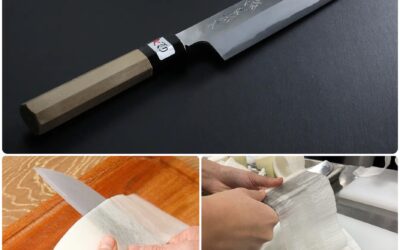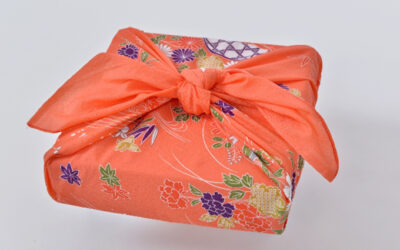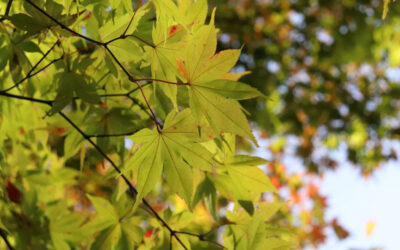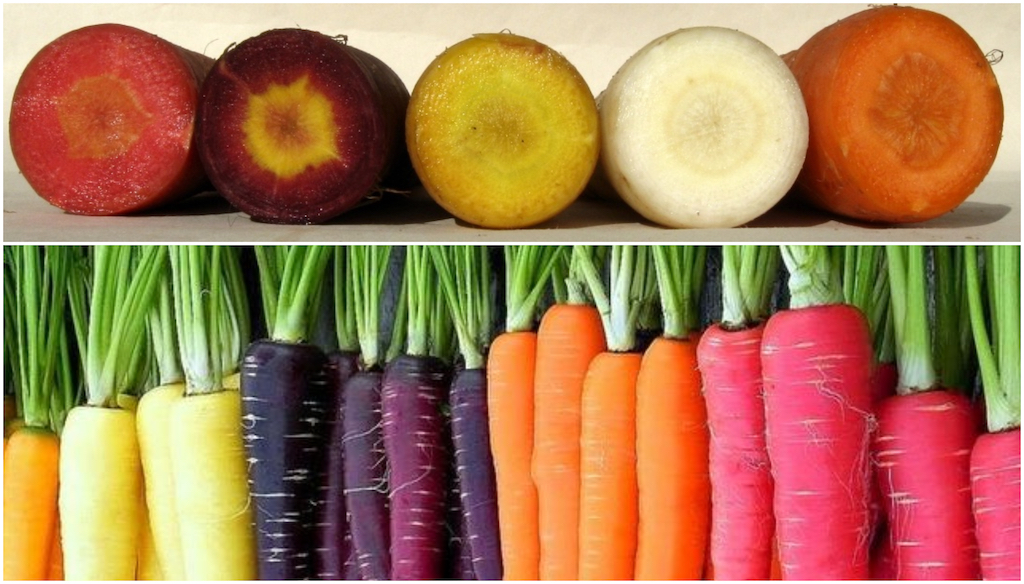
Beautiful & Nutritious
The pigments that make these carrots so beautiful are also the key to their nutritional power.
Orange carrots are especially rich in beta-carotene and vitamin A, both of which help to fight inflammation. Red carrots, like red tomatoes, are rich in lycopene offering some protection from environmental toxins. Yellow carrots with abundant quantities of lutein are thought to stave off the effects of aging on the eyes and purple carrots are packed with anti-inflammatory anthocyanin. In addition to these antioxidants, carrots boast large amounts of dietary fiber and minerals such as potassium.
Many people assume that vegetables are most nutritious when consumed raw… not necessarily. In the case of carrots dense cell walls can be a barrier to accessing the nutrients locked inside the cells. Briefly cooking carrots (about one minute) increases the availability of their antioxidant compounds.
Try making the Carrot-Ginger Rice, below.
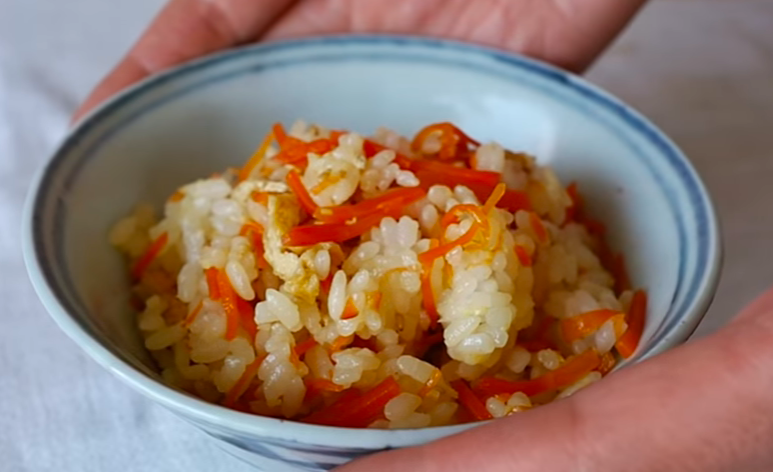
Carrot-Ginger Rice
Takikomi-style rice dishes are infused with flavor because they are cooked with broth used instead of water – broth that has extracted the essence of flavor from ingredients that will be cooked with the rice. In this instance, CARROTS and GINGER.
Download a recipe for Carrot-Ginger Rice.
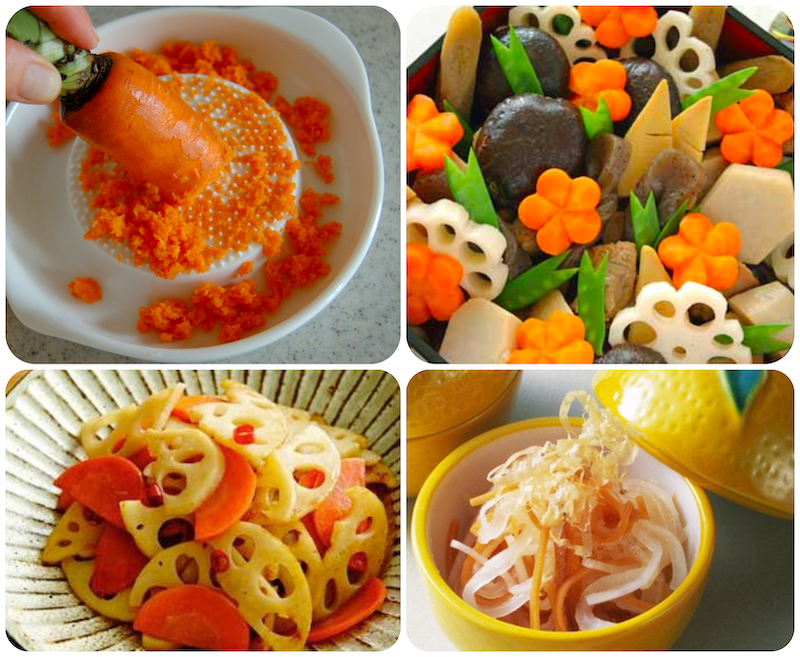
Lots of ways to enjoy carrots! Here are a few suggestions from previous posts: KIMPIRA, a spicy stir-fry of carrots and lotus or burdock root; NISHIMÉ, a classic soy-simmered dish of carrots (often scultpted to resemble plum blossoms), shiitaké mushrooms and other vegetables; KOHAKU NAMASU, a celebratory salad of carrots and daikon in a sweet-and-sour sauce; a great GRATED CARROT salad dressing.

